Contents
- Traditional and Modern Eating Practices
- Vegetarianism and Dietary Restrictions Across Communities
- Meals of the Day
- How Spicy is the Food?
- Local Produce
- Pickles
- Baby Food and Tiffin Boxes
- Festival and Seasonal Delicacies
- Wedding Food
- Prasad and Bhandara
- Smoking, Drinking and Substance Use
- Local Culinary Traditions
- Eating Out
- Adarsh Upahar Gruh
- Pritam Ice Cream
- Sources
RATNAGIRI
Food
Last updated on 22 July 2025. Help us improve the information on this page by clicking on suggest edits or writing to us.
‘A bit spicy, a bit sour, and a generous helping of rice’ sums up Ratnagiri’s food. The district focuses on seafood because of its long coastline. Recently, chicken and mutton have also become more popular as they are now easier to find and more affordable. The mix of sour flavors, rice, and seafood dishes, along with tasty sweets, creates Ratnagiri's unique food culture.
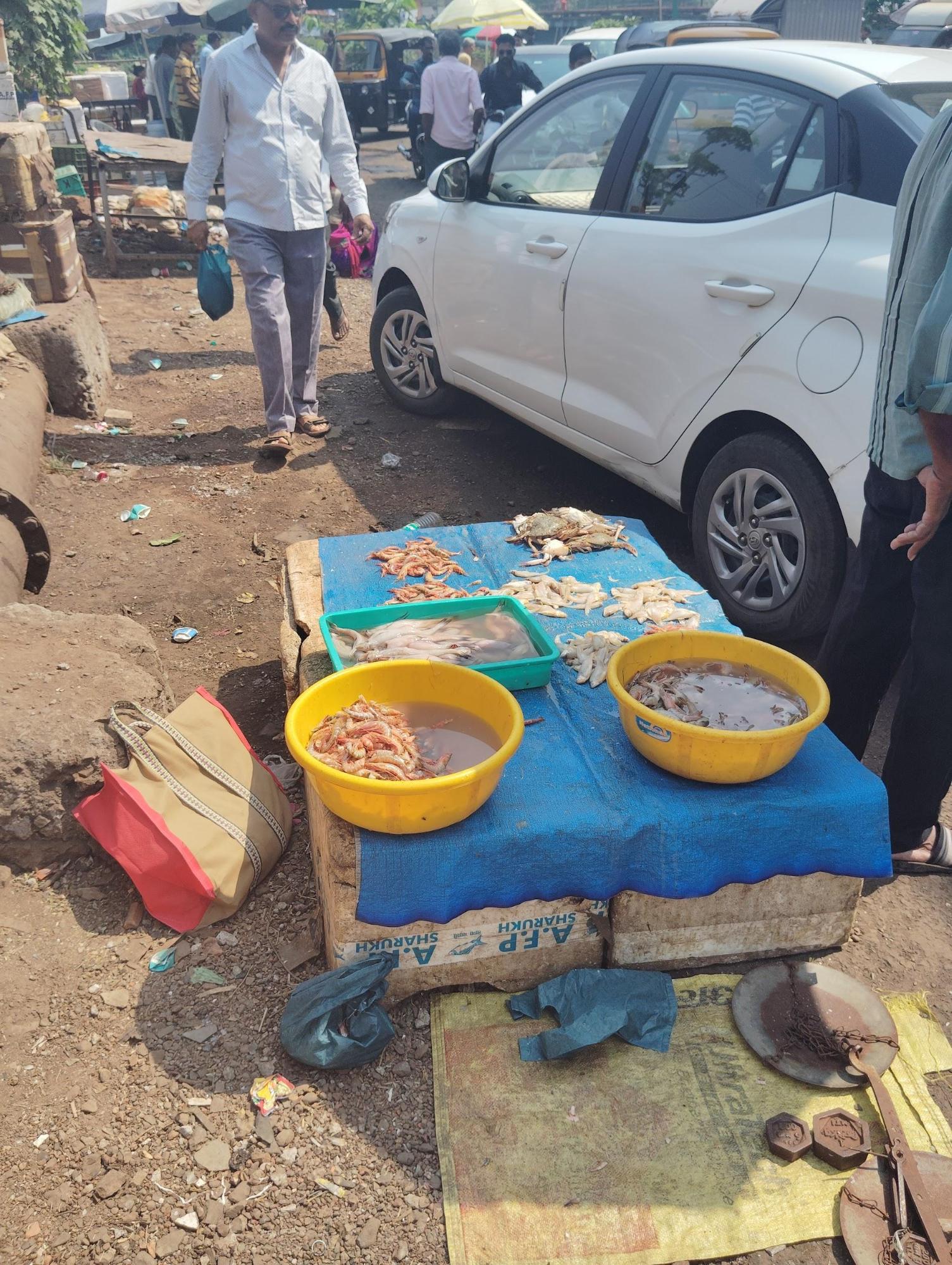
Traditional and Modern Eating Practices
The food culture of Ratnagiri has seen multiple changes over the years. One of the major shifts has been in the staple diet. Earlier, people used to prefer rice, and wheat was rarely consumed. But now, wheat in the form of chapatis has become extremely important in the food palate. The food in the district has become spicier, and unlike before, meat is heavily consumed.
In Ratnagiri, people prefer fresh and homemade cooking ingredients. For instance, even though packaged masalas are now found in the market, people use “Khade Masalas” or whole spices instead of buying from the market.

Oil plays an important role in Indian cooking, as almost every type of curry begins with frying onions in some kind of oil. In the past, black til (sesame) oil was commonly used in households, but now people choose from a wide range of oils available in the market.

Another significant change has occurred in the methods and utensils used for cooking. Previously, meals were prepared on a mud stove known as a chula. However, due to economic development, this practice has diminished, and cooking gas stoves are now found in most households that can afford a gas connection. It is noteworthy that mud stoves are still present in many homes, but are now limited to cooking certain dishes. Additionally, cooking utensils that were once made of aluminum have largely been replaced by stainless steel. Some implements, such as the “kavil” and “kadhai,” are made from a specific type of material known as “bhida”.
Traditionally, Kharwas were distributed among the villagers to announce that the distributor's cow had given birth. These milk-related dishes were enjoyed throughout the village. Fresh dahi (curd) was eaten with rice or on its own. However, these practices seem to have diminished as cow rearing has somewhat declined.
Among all the changes that have taken place in food culture, one thing that has remained constant is people’s love for buttermilk. In earlier times, cow milk was used to make dahi, Taak (buttermilk), Kharwas (made from the first milk a cow gives after giving birth), and other dishes. Taak was an important part of people’s diets and is still consumed today, although not daily.
Vegetarianism and Dietary Restrictions Across Communities
Since Ratnagiri is a coastal district, seafood is undoubtedly extremely prevalent. Earlier, the Brahmin community used to refrain from eating non-vegetarian food, but this has now changed. The exceptions to this culture are the bhakts of Vitthal Bhagwan, known as Buas and Buins, who have accepted the Tulsi mala. They only consume vegetarian food and also refrain from alcohol. Lastly, people avoid eating non-vegetarian food during the Shravan month (August-September).
Meals of the Day
People usually have three meals a day: breakfast, lunch, and dinner. Lunch and dinner typically consist of various types of leafy vegetables, such as methi, tera, and mathh, as well as seafood items like kolambi (prawns), moshi, and sukat (dry fish). In between lunch and dinner, people often take a tea break, which is usually accompanied by snacks such as fried fish, karanjis, shankarpali, bhajjis, and vadas.
In the past, people primarily consumed only supari as a digestive. However, nowadays, many have started eating fennel seeds and fruits such as watermelons, melons, and mangoes (in summer). Additionally, people enjoy sweet dried amla. Many also drink solkadhi, made from kokum and coconut milk, or kokam sarbat.
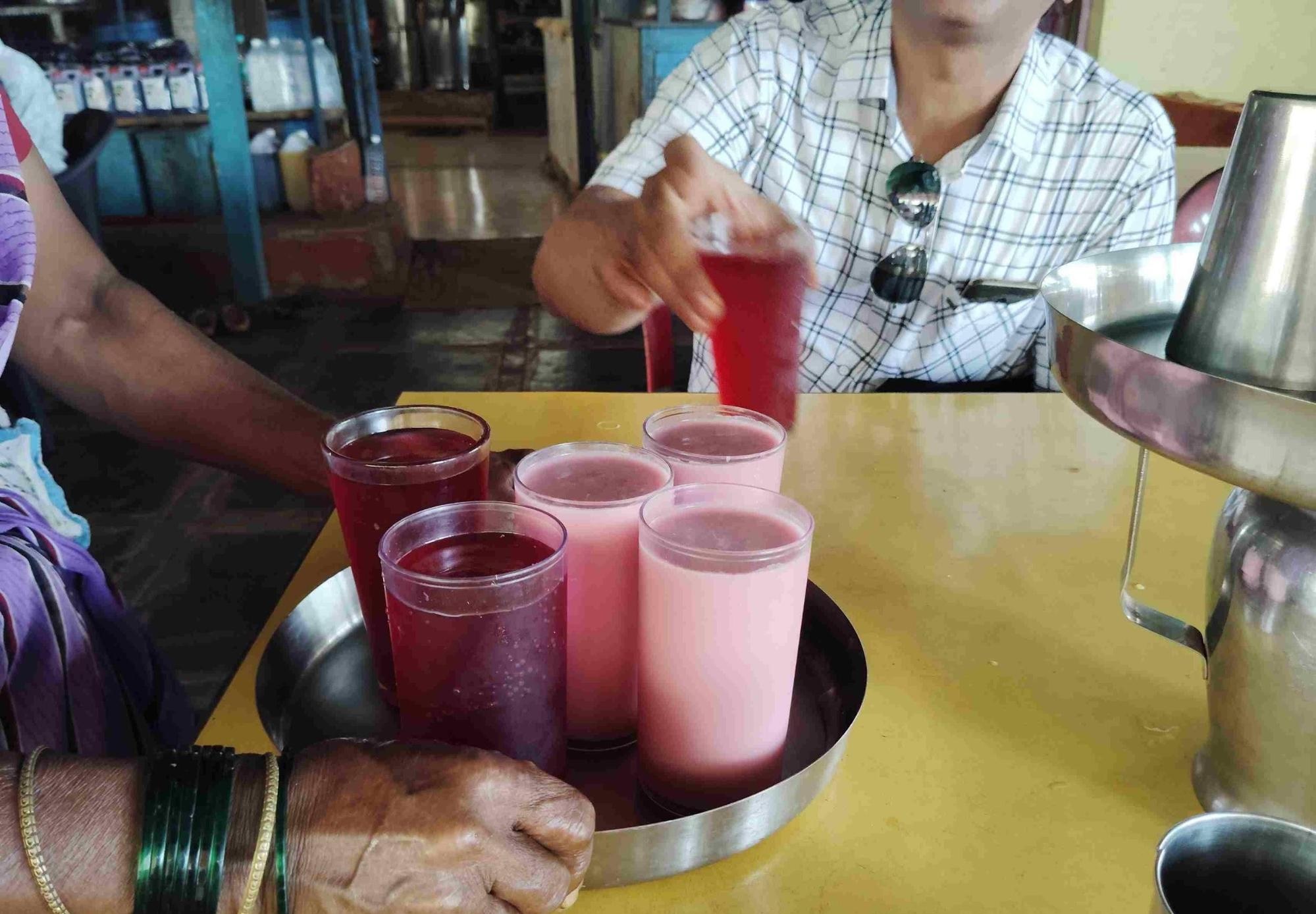
How Spicy is the Food?
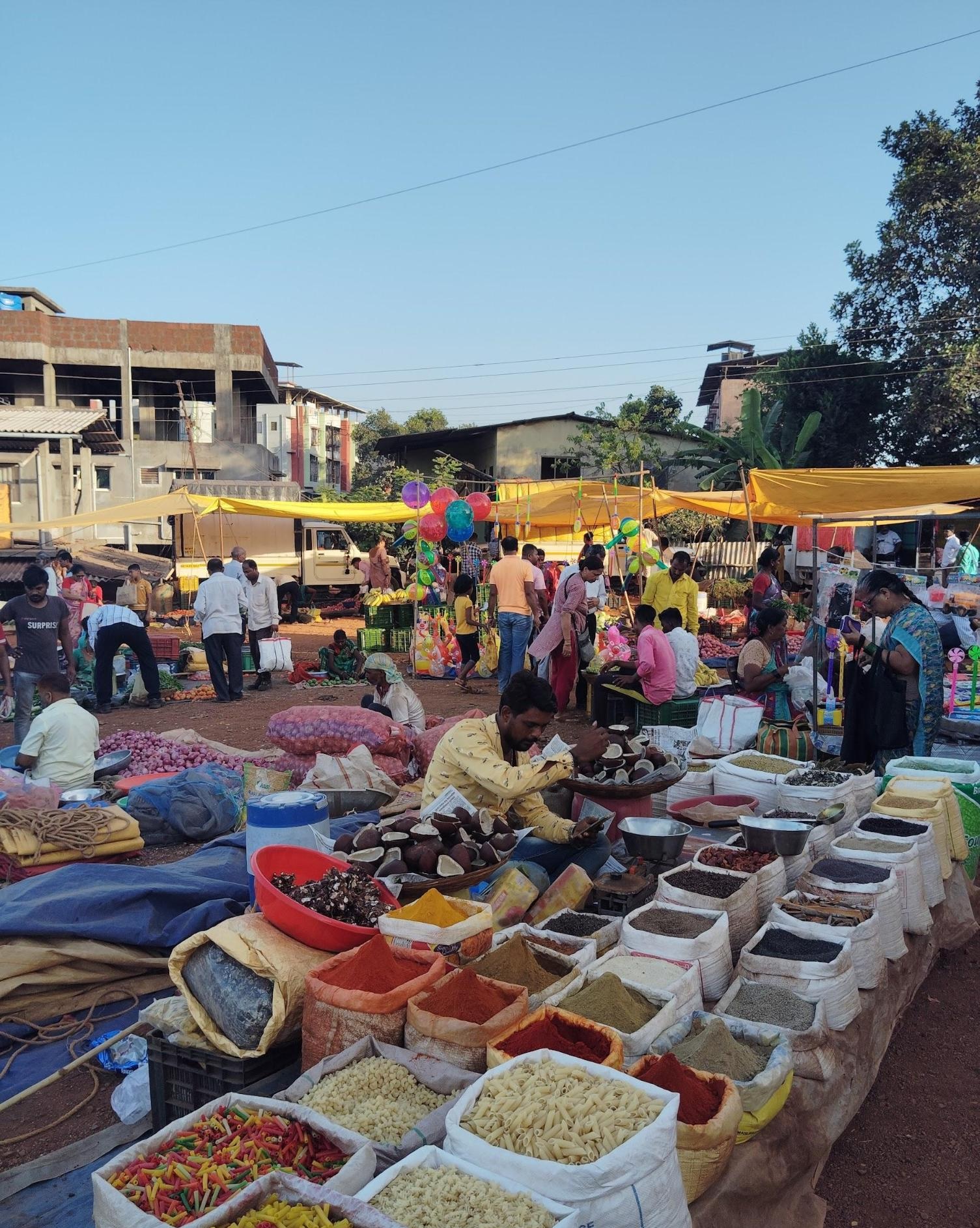
The food in Ratnagiri is not very spicy. Dry coconut is roasted and used in making garam masala, which is added to every curry. This process helps to reduce the spice levels of the food consumed. Adding coconut milk to the curry is another method for balancing the spice level.
Local Produce
One thing Ratnagiri is known for is its mangoes, especially Alphonso mangoes, which are called Hapus in Marathi. There is a distinction among these mangoes as well: mangoes found in the wild are called Raivali, while Alphonso mangoes grown by grafting are referred to as Kalmi. Alphonso mangoes are typically eaten fresh, while other types of wild mangoes are used in various dishes such as Aampoli and Muramba. Raw wild mangoes are made into lonche (pickles), aamsall, and chutneys.
Additionally, other fruits such as kaju (cashew nuts), phanas (jackfruit), kokum, and coconut are also locally grown and consumed. Local fruits like jambhul, kokam, star fruit, and jackfruit are nature's offerings that should not be missed.

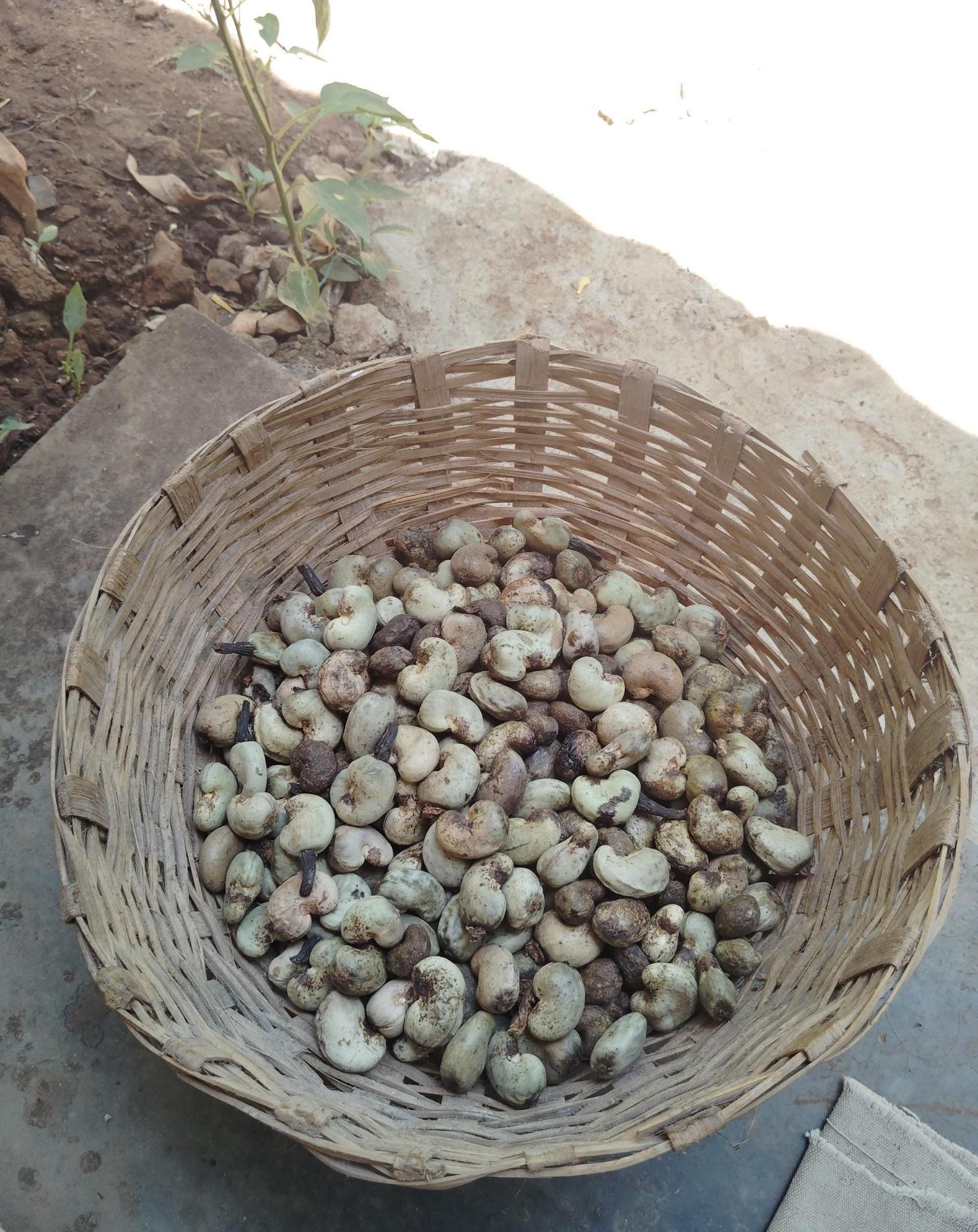
The main foods that were grown and traded have remained somewhat the same, with fruits being added to the range of crops cultivated, while the production of items like supari (betel nut) has declined. In the past, rice, mangoes, cashew nuts, betel nuts, jackfruit, coconuts, and, to some extent, bananas were traded. Now, there is a greater emphasis on horticulture; people have started growing and consuming fruits like chikoos, watermelons, and pineapples. Other fruits are also now widely consumed and used in religious offerings.
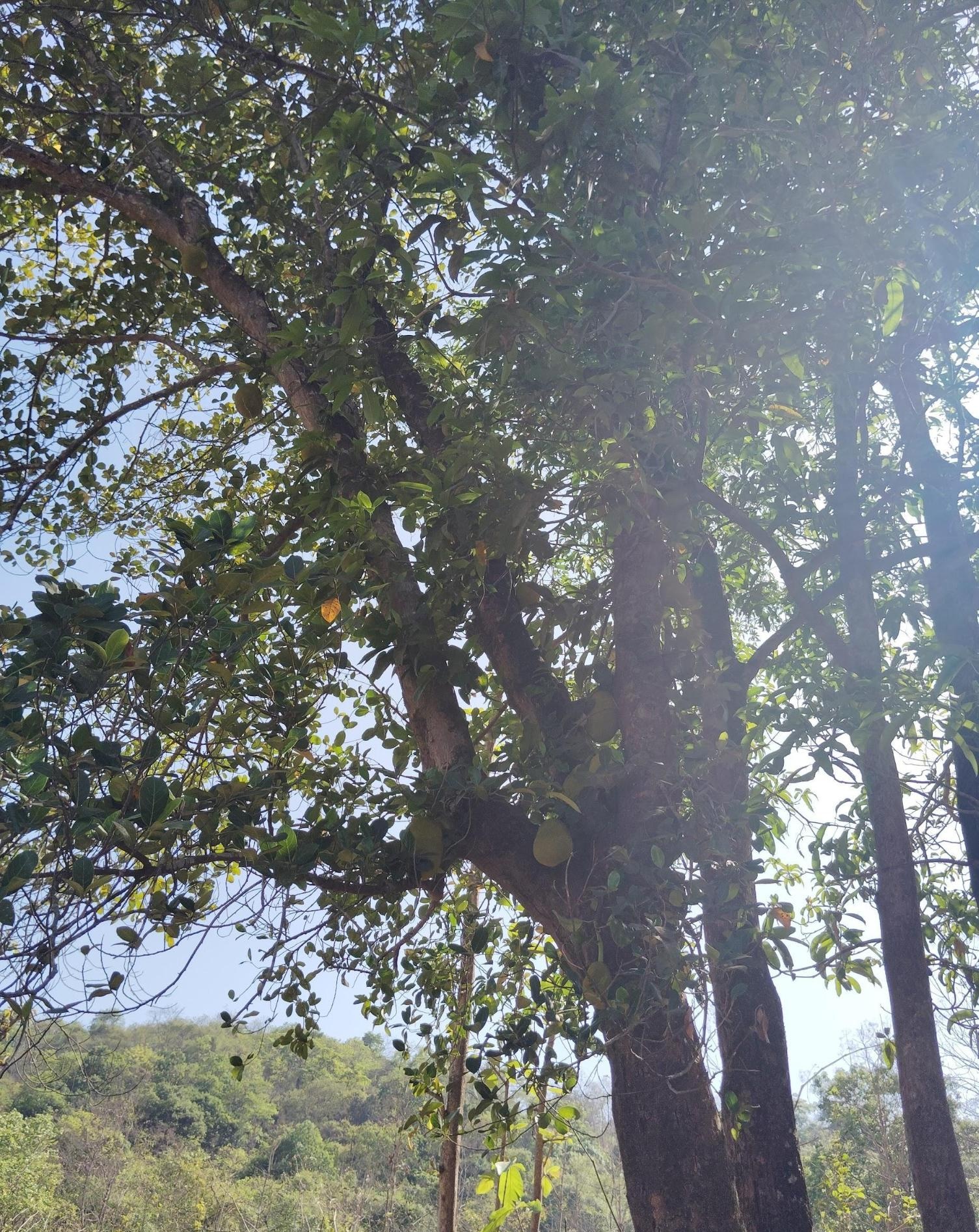
Pickles
The people of Ratnagiri love their pickles. Usually, they use raw mango, lemon, and fish to make them. Sometimes, green chilies are also added to the mix.
Baby Food and Tiffin Boxes
Newborn babies are fed cow's milk for the first three days or until the mother can nurse the baby. Thereafter, for the next three months, finely ground rice flour is mixed with milk and fed to the baby in addition to mothers nursing the baby. This appears to be the common practice across every community in the district.
For school-going children, parents usually pack items such as bhaaji and chapati in their tiffins. Finally, government schools in Ratnagiri serve mid-day meals such as khichdi and rice-dal.
Festival and Seasonal Delicacies

Like most other districts, the food palate of Ratnagiri changes with the seasons. For example, during the monsoon, fish and crabs found in the paddy fields are widely consumed. Additionally, certain delicacies are specially prepared for specific festivals. For instance, Modaks are made during Ganpati, and Puran Polis are prepared for Holi and Gudi Padwa. Interestingly, on the day of Gauri's arrival (during Ganesh Chaturthi), vade with chicken is made. During Diwali, various types of snacks are prepared at home. An offering of Kheer and Ghavane is also made to the Gram Devta during Holi.
Wedding Food
Usually, the food at weddings is vegetarian. Curries of Brinjal, Panner, Potato, and Kabuli Chana are usually served with Puris. Papads, Koshimbir, and a pickle are given as sides. Rice and dal are common. For deserts, Gulab Jamun, Jalebis, Rasgulla, or small pieces of Puran Poli are usually served.
Prasad and Bhandara
Kandi Pedha, along with other types of Pedhas, Motichoor Ladoo, and Khadi Sakhar, are some of the prasads offered at mandirs across the district.
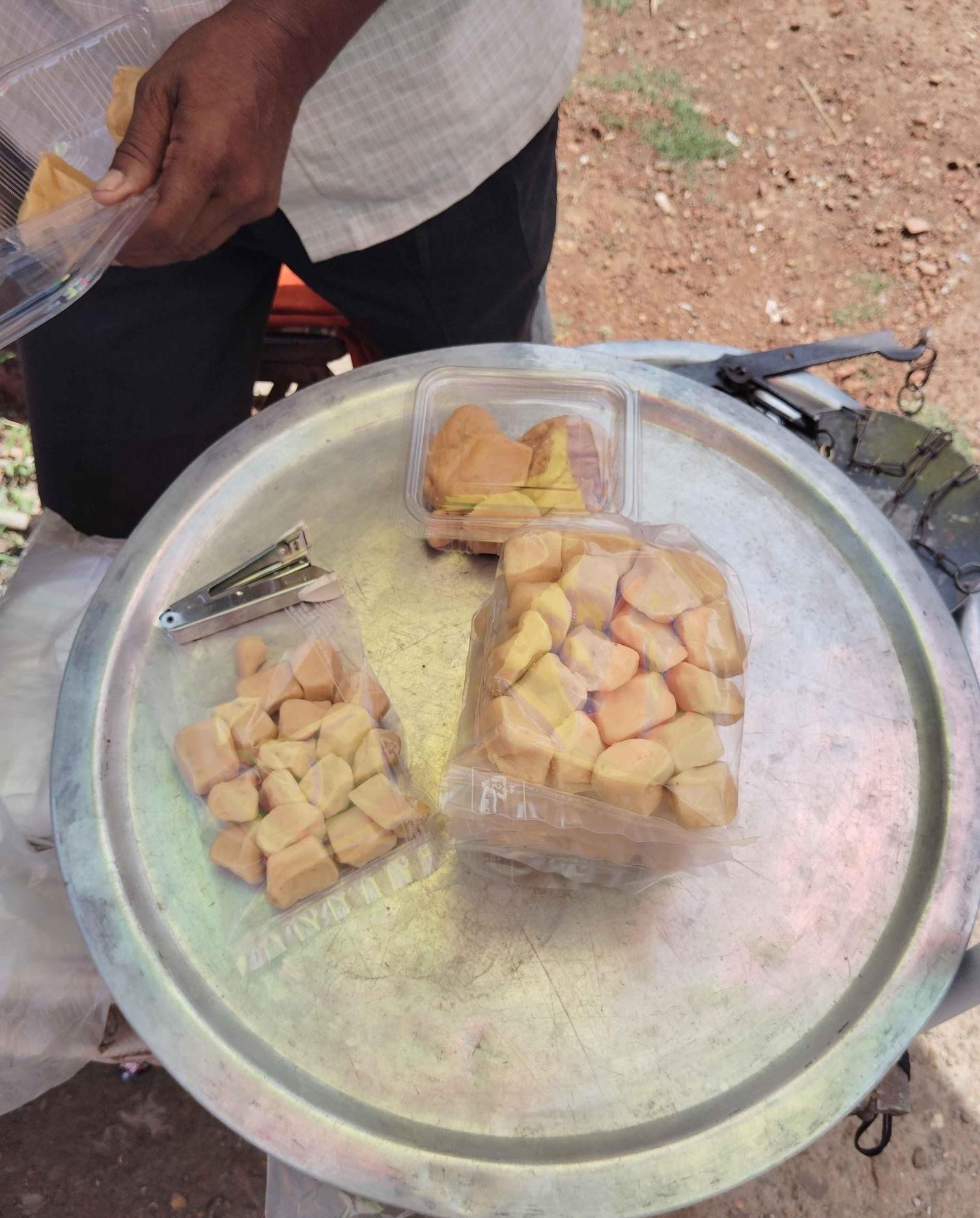
Community lunches and dinners known as Bhandara are common during religious occasions. Festivals such as Hanuman Jayanti, Navratri, and Mahashivratri are always followed by a “Mahaprasad.” People are also expected to host community lunches or dinners when they conduct any puja at home. These meals are typically prepared by the women of the village who come together to cook.
Smoking, Drinking and Substance Use
When it comes to drinking alcohol and smoking, there is a stark gender difference. Alcohol is primarily consumed by men, who are also the ones most likely to smoke. Data suggests that 13% of men in Ratnagiri consume alcohol, compared to only 0.5% of women. Alcohol is often perceived as something that only men are permitted to consume, leading women to refrain from drinking. Men typically drink during social gatherings, although public drinking is still frowned upon. A local variety of alcohol known as ‘Madi’ is made by fermenting the extract of coconut trees for a day. In Ratnagiri, there is a particular community that completely abstains from alcohol; these individuals have accepted the “Tulsi Mala”.
Regarding smoking, people tend to prefer ‘bidis’ over modern cigarettes. In addition to smoking, many also chew tobacco products such as “Masheri”. According to the NFHS report from 2019-2020, approximately 18.4% of women use some form of tobacco, while around 31.3% of men do the same. This gender disparity can be attributed to the fact that only older women are generally seen consuming tobacco (in the form of paan or supari), while younger women tend to avoid such products altogether.
Local Culinary Traditions
There are many popular dishes, such as Ghavane and Muramba, that are local to Ratnagiri. Additionally, rice is a significant component of Ratnagiri’s cuisine. It is widely grown for both subsistence and commercial purposes, making it a staple in nearly every household. Rice is ground on a jata into rice flour, which is used for making bhakris, modaks, and other dishes. Whole uncooked rice is made into a paste using a pata & varvanta for dishes like Ghavane. Another irreplaceable component of Ratnagiri’s food is coconut, which serves as the base for most curry dishes.
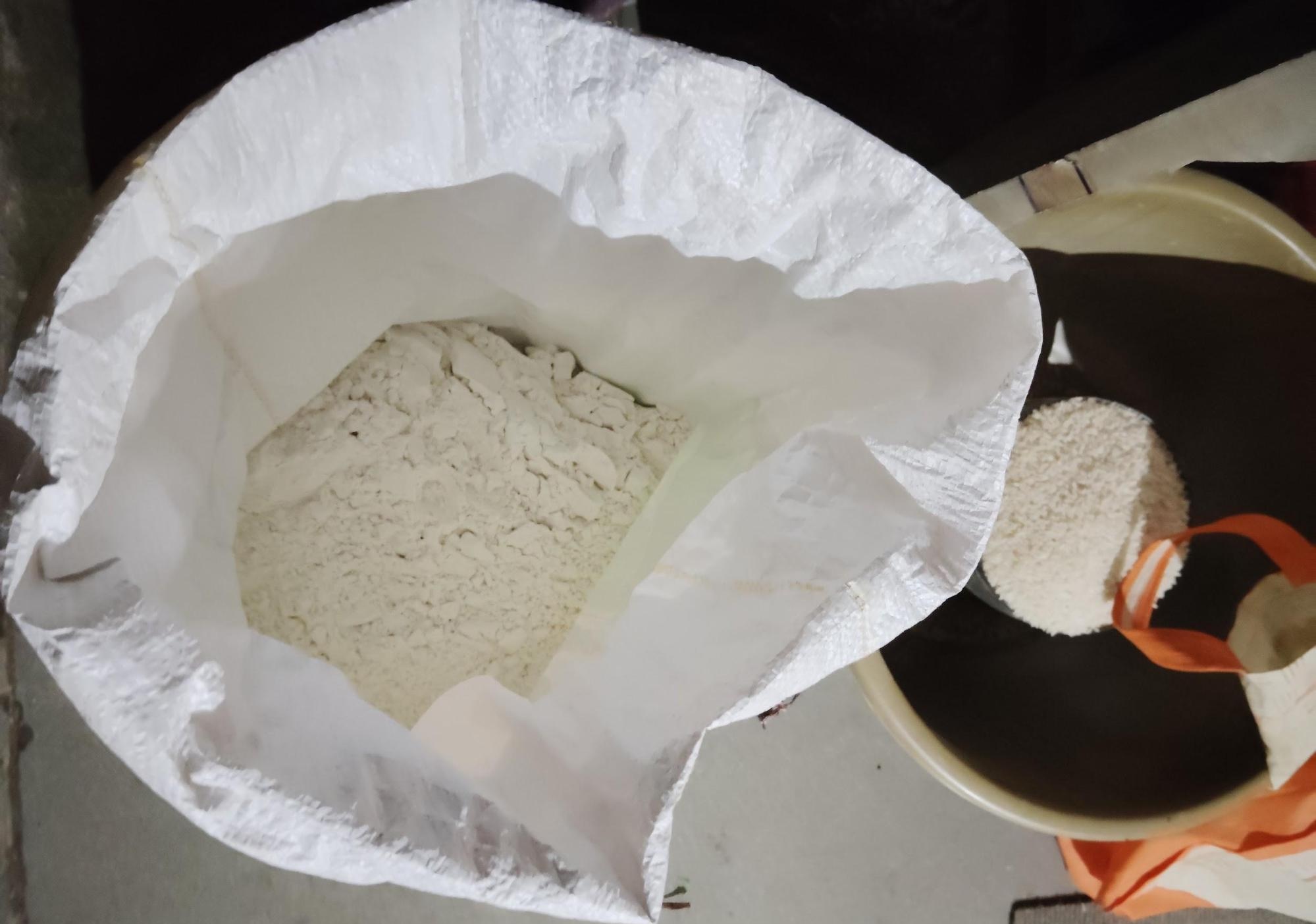
Most of these dishes have variations in how they are made. For example, some people prefer Ghavanes that are a bit sour in taste (called Ambole). Usually, the batter for Ghavane is freshly prepared by grinding whole, wet, uncooked rice grains. To make Amboles, one needs to grind and add methi, dhana (whole coriander seeds), and chana dal to the rice batter. Then, it should be left overnight to ferment and cooked the next morning.
Another dish that has some variation in its preparation is Muramba. People usually fry rai (mustard seeds) with jeera (cumin seeds) and then add diced raw mango along with some red chili powder and jaggery. In other regions, people prefer not to include mustard seeds and jeera.

Vades are also made in different ways at places. Nowadays, people like adding cucumbers or other such vegetables to the batter made out of rice flour, fennel seeds, black paper, chana dal, jaggery, and urad dal with some salt.
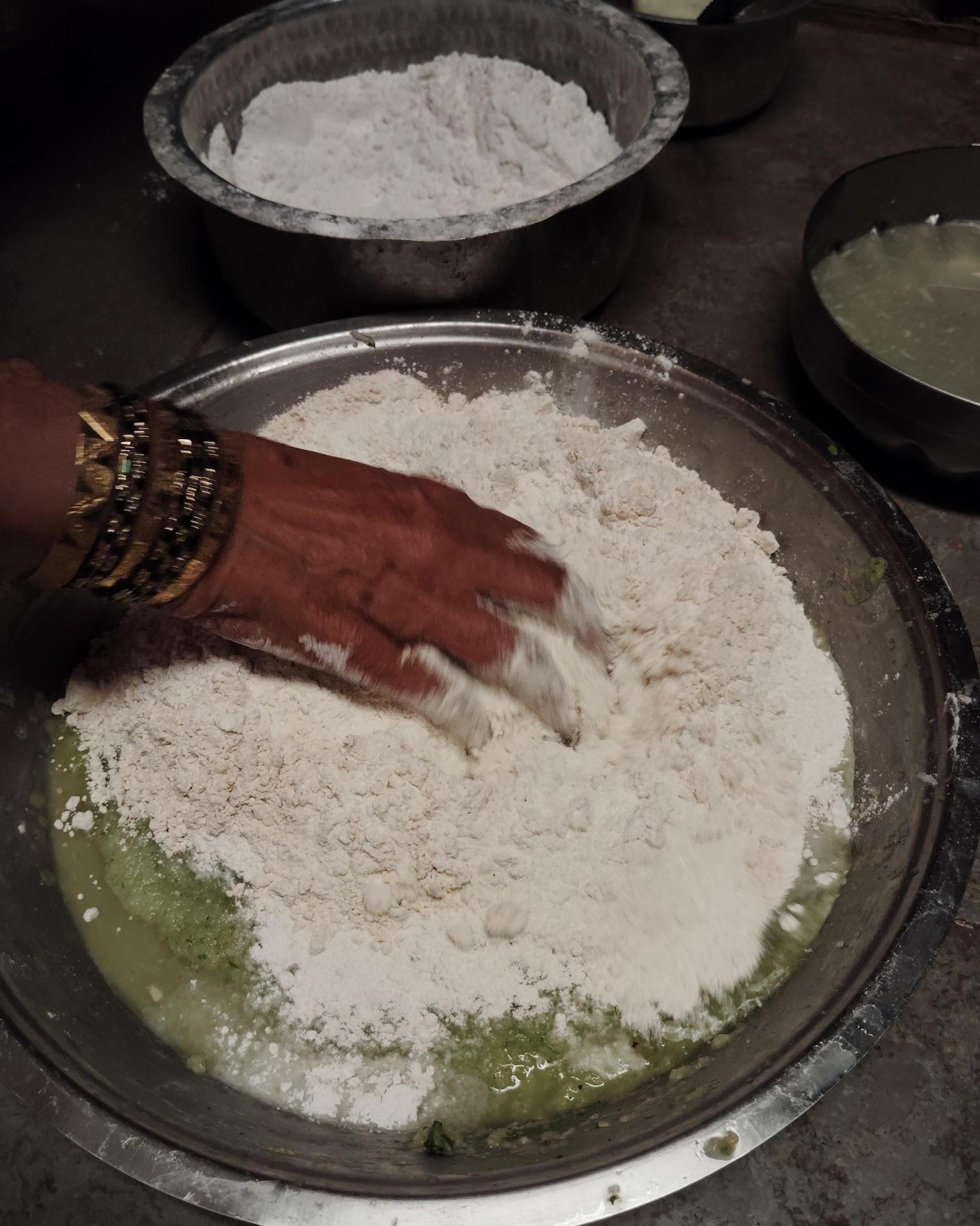
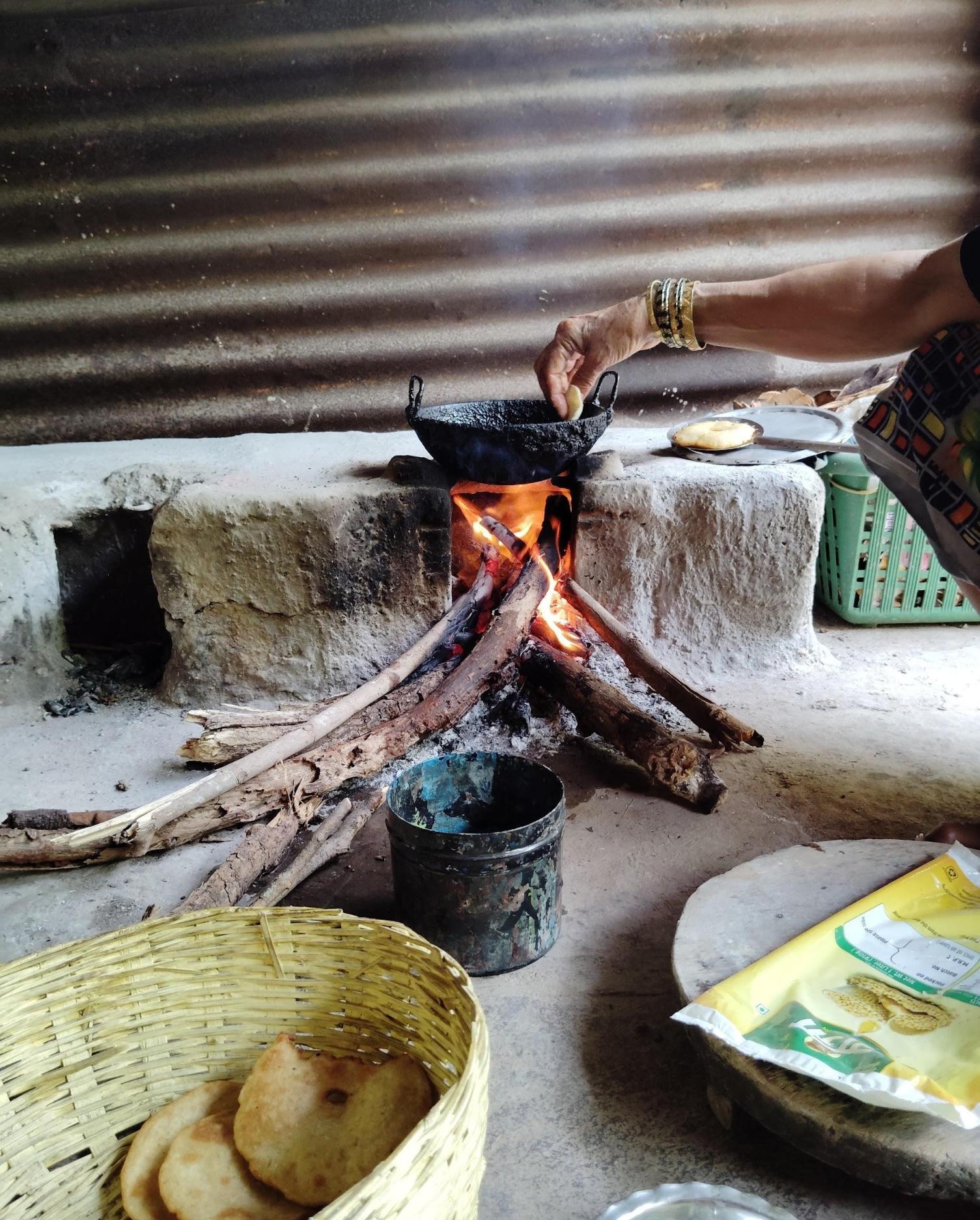
The batter should be set aside for a while before being deep-fried, preferably over a mud stove. In the past, the batter was flattened on a banana leaf, but now rough plastic is used instead. Jackfruit seeds are dried in the sun and then used in fish curries. The "male flower" part of the banana is also cooked. Dried fish is another dish that can be prepared in several ways.
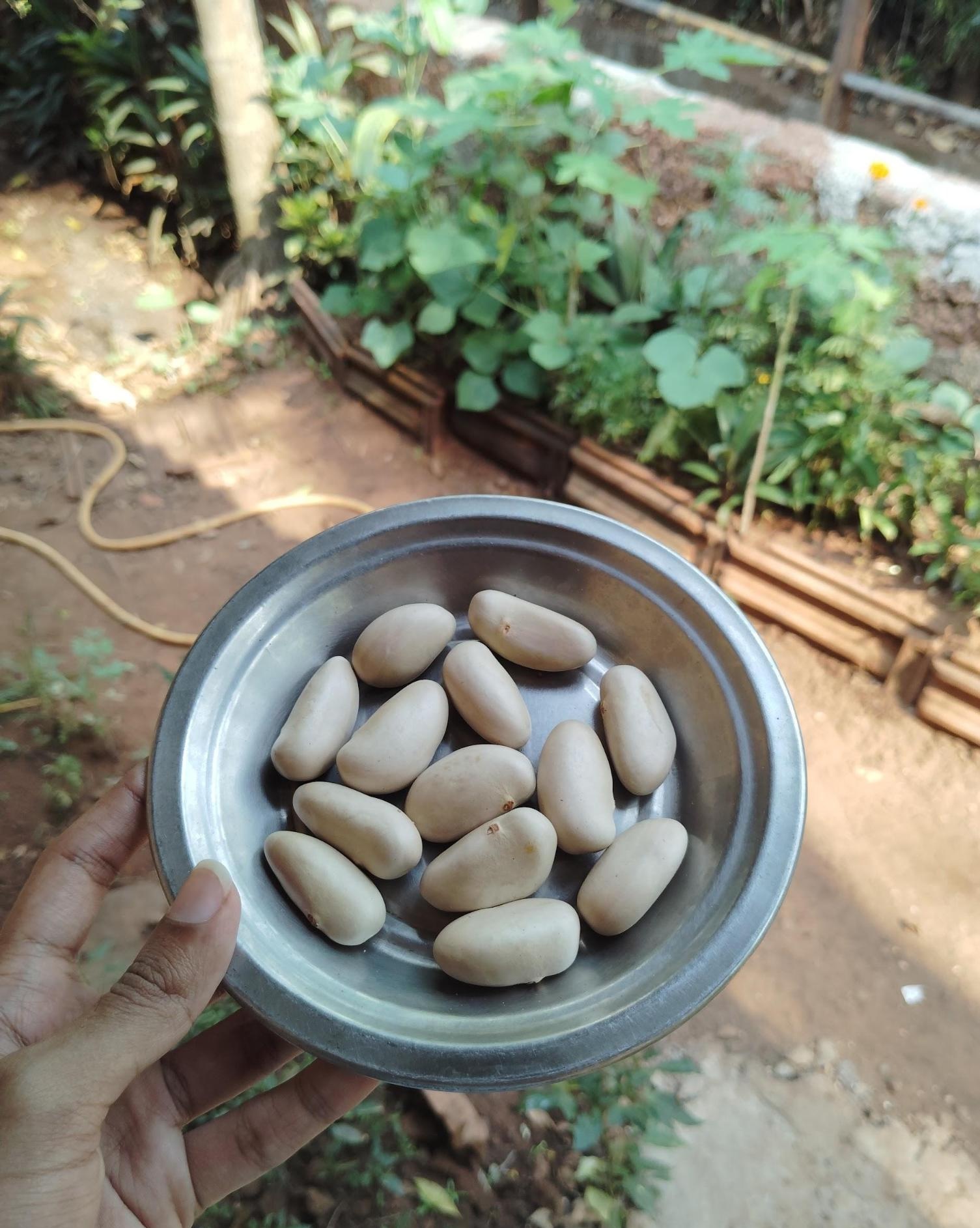
When it comes to sweets, Ratnagiri boasts a rich variety. Modaks, Karanjis, Pedas, and Purans are extremely popular in the district. One particularly unique dish is called "Bors," made from rice flour and jaggery syrup.
Eating Out
The culture of eating out has gained immense popularity over the past few decades, with numerous eateries opening in towns offering a variety of dishes such as Pav Bhaji, Pani Puri, Dabeli, and Dosas. In earlier times, street food options were largely limited to various types of Bhajjis (fritters) and Vada Pav. Nowadays, families frequently dine out for special occasions like birthdays and anniversaries. Food also plays a significant role in community building, particularly in places like Ratnagiri.
The trend of dining out appears to be particularly strong among the younger generation, with diverse eateries sprouting up on every corner. Additionally, there has been a noticeable rise in restaurants serving Chinese cuisine. While older and middle-aged individuals tend to dine out primarily during wedding functions or community dinners, younger people are more inclined to enjoy street food regularly.
Adarsh Upahar Gruh
The Adarsh Upahar Gruh has been in existence for 75 years, as of 10 May 2024. It is being run by the third generation of the Kale family, who are natives to the adjoining taluka of Khed. The restaurant has come a long way. In 1947, the restaurant began by selling only Bhajis, Vadas, and Chai; now it sells Dosas, Pav Bhaji, and other lunch items and homemade sweets. It has also opened a special dining region (different from its main dining area, which works on a seat-sharing formula).

Pritam Ice Cream
Established in 1978, Pritam Ice Cream has been serving homemade ice creams for over 44 years. Known for its unique flavors like Peru (guava) and Chickoo (sapodilla), this beloved ice cream parlor is owned by an elderly couple who have kept its charm alive. In addition to ice cream, they also offer their famous homemade Poha Chivda. Located in Kasba, Sangameshwar, Pritam Ice Cream is one of the oldest ice cream parlors in the area. Over the years, they have expanded their menu to include a variety of Faloodas, adding to their delicious range of treats.
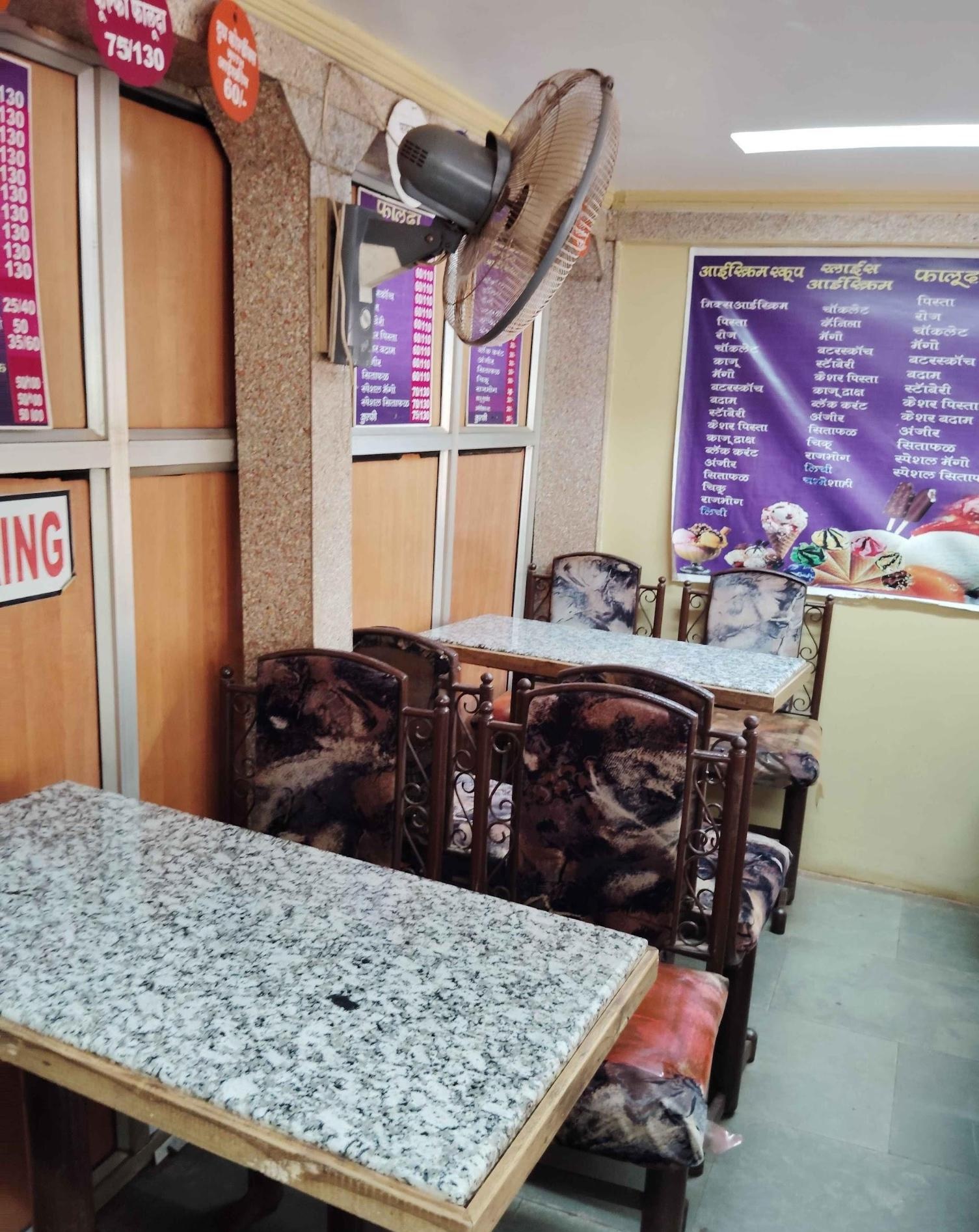
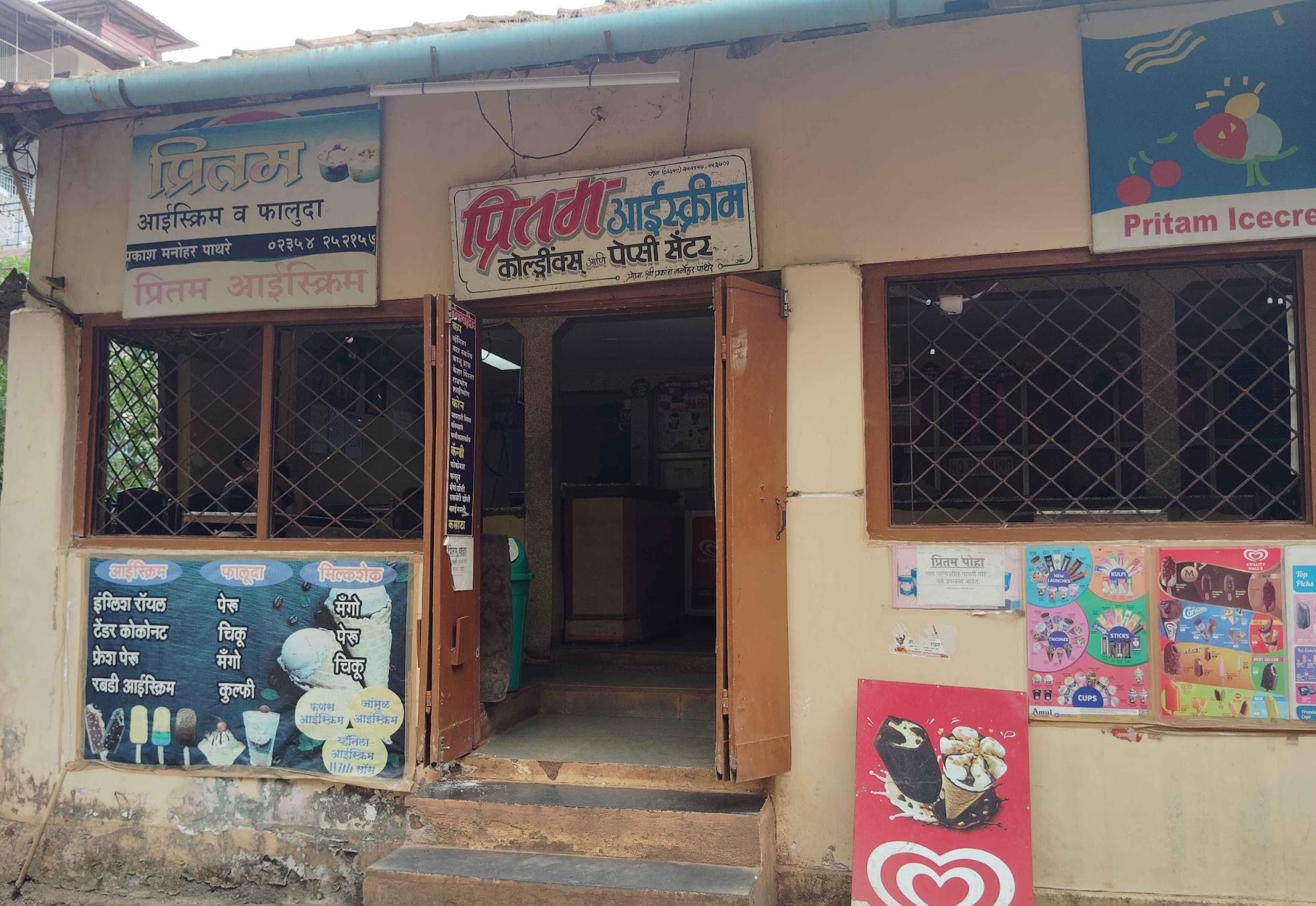
Sources
International Institute for Population Sciences (IIPS) and ICF. 2021. National Family Health Survey (NFHS-5), 2019-21: India: Volume II. Mumbai: IIPS.
Last updated on 22 July 2025. Help us improve the information on this page by clicking on suggest edits or writing to us.